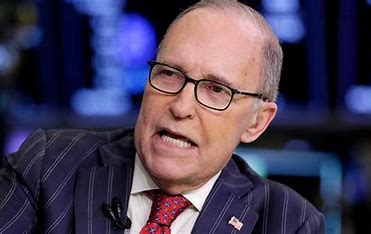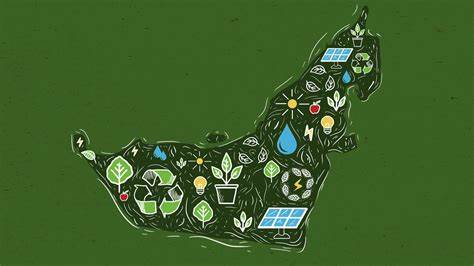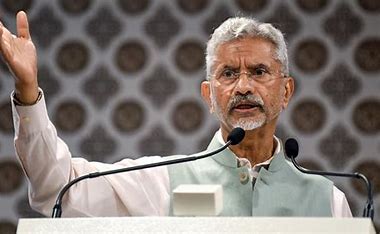
In January 2021, Prime Minister Narendra Modi gave 1,06,000 land certificates and addressed a large gathering at Jerenga Pathar in Sivasagar, Assam, a historic site where Joymoti, an Ahom princess, had sacrificed her life in the 17th century. “When our party came to power in Assam, there were nearly 6,00,000 families who were landless and had no land documents. The previous governments didn’t care for these families. But our government started working on it earnestly to give them land certificates,” PM Modi said. The allotment of these certificates would ensure the benefits of several Central and State government schemes to these families and they would even be able to take bank loans based on land ownership. Till date, over 3.28 lakh families in Assam have received “land pattas” thanks to the Modi government’s incessant efforts. As part of this initiative, landless families in rural areas will get seven ‘bighas’ of agricultural land and another one ‘bigha’ to construct houses. One ‘bigha’ is equal to 14,400 square feet. In urban areas, the allotment would be 1.10 ‘katha’, and in Guwahati, it would be 1.50 ‘katha’. One ‘katha’ in Assam is equal to 2,880 square feet. Giving land rights to indigenous landless families was an important promise made in 2016 by the BJP, which came to power in Assam with the slogan of protecting ‘jaati’, ‘maati’ and ‘bheti’ (community, land and hearth). The BJP has clearly lived up to the promises made and outperformed by a wide margin.
PM Modi’s decision to extend the Pradhan Mantri Garib Kalyan Anna Yojana (PMGKAY) for nine months during the Covid pandemic last year benefitted Assam and its people in a big way. Over 58 lakh families, which is around 2 crore 5 lakh individuals, in Assam, reaped the benefits of the extension, with each individual getting 5 kg of rice and each family getting 1 kg of pulses per month. Roughly 1.25 lakh tonnes of rice and 5,795 tonnes of gram were distributed by the Modi government every month in Assam, till the scheme persisted. Assam also got an additional Rs 2,236 crore from the Centre.
PM Modi has repeatedly emphasised that his government is working to create a new Assam by investing Rs 90,000 crore in highways. The government’s ongoing work on restructuring the National Bamboo Mission is praiseworthy. Due to the classification of bamboo as a forest product, northeast India had suffered for decades under successively incompetent Congress-led regimes. The Modi government started restructuring the National Bamboo Mission with an outlay of Rs 1,300 crore in 2018 and that number has only multiplied subsequently.
In February 2021, PM Modi launched various connectivity projects in Assam to further reduce the “geographical and cultural distances” between the state and rest of the country, including the Mahabahu-Brahmaputra inland waterway project. These projects are a continuation of the slew of similar development and infrastructure projects in excess of Rs 1 lakh crore that are currently underway in Assam. The Brahmaputra is a confluence of brotherhood and togetherness. For years, this sacred river has connected people. The mighty Brahmaptura is on a timeless pilgrimage, assimilating, integrating and unifying people of diverse cultures. But it is also true that for long, work that should have been done to increase connectivity on the Brahmaputra was never done, and a clueless and rudderless Congress that ruled Assam for decades has to bear the onus for such apathy. That is why connectivity has always remained a challenge, not just in Assam but in the entire Northeast too. However, after the BJP came to power in Assam in 2016, things began to improve sharply and steadfastly. From bestowing the highest civilian honour, the Bharat Ratna, on the legendary Bhupen Hazarika to reclaiming Assam’s rich history, the Modi government has gone beyond economic progress to instill a sense of pride and mainstream Assam and the Northeast with the rest of India by breaking through the infamous tyranny of distance.
To mark the Rs 3,200 crore Mahabahu-Brahmaputra initiative, aimed at improving water transport connectivity, PM Modi recently inaugurated three Ro-Pax vessel operations between Neemati Ghat (Jorhat) and Majuli island, North Guwahati and South Guwahati as well as Dhubri and Hatsingimari. Modi also laid the foundation stone of an Inland Water Transport (IWT) Terminal at Jogighopa and various tourist jetties on the Brahmaputra and launched two portals for the ease of doing business last month. The Ro-Pax service between Majuli and Jorhat would reduce a travel time of 11 hours to only one hour, while the travel time between North and South Guwahati will be reduced from three hours to just 30 minutes. Meanwhile, to reach Dhubri from Hatisingmari, it will now take barely three hours, instead of the earlier eight.
The BJP has done stellar work in Assam, vindicated, amongst other things, by the proposed 19-km-long four-lane bridge over the Brahmaputra, which will be India’s longest bridge over a river, that connects Dhubri in Assam and Phulbari in Meghalaya. The bridge is to be constructed at a cost of Rs 5,000 crore. A bhumipujan, or ground-breaking ceremony, was also performed recently for a 6.8-km-long two-lane bridge that would connect Kamalabari in Majuli, the world’s largest river island, to Neematighat in Jorhat. Whether it is the Bhupen Hazarika Setu, the Bogibeel Bridge or the Saraighat Bridge, all of these have made life easier in Assam for the common man and woman. It has not just strengthened the internal security of the country, but also protected the brave soldiers of our nation. Majuli residents got their first helipad and now they will have a road network too, thanks to the Modi government. The 8-km-long bridge connecting Kalibari (in Majuli) with Jorhat will be a lifeline for thousands of Assamese families. The distance between Meghalaya and Assam was about 250 km by road, but the Dhubri-Phulbari bridge will reduce it to just 19 or 20 km. This bridge will reduce travel time from six hours to merely 20 minutes. The Modi government is committed to improving connectivity to South Assam’s Barak Valley and reducing the distance between Assam and other northeastern states like Meghalaya, Manipur and Mizoram.
The recent laying of the foundation stone of two hospitals and opening of medical colleges in Biswanath and Charaideo, besides the launch of ‘Asom Mala’, a programme for state highways and major district roads at Dhekiajuli in Sonitpur District, are significant events for multiple reasons. Assam Chief Minister Sarbananda Sonowal, Union Minister Rameswar Teli and Chief of Bodoland Territorial Region Pramod Boro were present on the occasion of the launch of the historic “Asom Mala” by PM Modi. Leaving behind the legacy of violence, deprivation, tension, discrimination and struggle, today, the entire Northeast is moving forward on the path of development and Assam is playing a key role in this. Thanks to the BJP’s untiring efforts, after the landmark Bodo accord, the recent election of the Bodoland territorial council has marked the beginning of a new chapter of progress in the region.
The poor state of medical infrastructure in Assam can be gauged from the fact that in between Independence and 2016, Assam had only six medical colleges. Whereas in the last five years under the Sonowal government, work on six new medical colleges has already been initiated, which is noteworthy and speaks volumes about the fast-paced growth under the BJP-led dispensation. Besides the AIIMS in Guwahati, the Biswanath and Charaideo medical colleges will cater to north and upper Assam. Similarly, in the backdrop of just 725 medical seats in the state, 1600 new doctors will come out every year once these new medical colleges become operational. This will significantly improve medical facilities in far-flung areas of Assam. Also, over 1.25 crore people in Assam are benefitting from subsidised treatment under the Ayushman Bharat Yojana, with over 55 lakh people in the state having already availed of primary health treatment in the Health and Wellness Centres (HWCs) that have been established in Assam. Nearly 40% population of the state has benefitted from Ayushman Bharat and 1.5 lakh people have received free treatment already. Janaushadhi Kendras, Atal Amrit Yojana and dialysis programmes are also bringing positive change in the lives of the common people.
Moving on from health to Assam’s tea gardens, crores of rupees have been transferred to the accounts of 7.5 lakh workers of tea gardens under the Dhan Puraskar Mela Scheme. Over 47,000 pregnant women working in tea estates are being helped by a special scheme worth Rs 12,000 crore. That allocation has now been raised to Rs 18,000 crore. Moreover, special medical units and over 130 mobile vans are operating in over 445 tea estates to take care of over 40 lakh workers, directly and indirectly associated with tea estates. Over 6.5 lakh people in Assam have also benefited from the nutrition-based Poshan scheme of the Modi government. Again, 35 lakh women have received gas connections under the Pradhan Mantri Ujjwala Yojana, with 4 lakh of the aforesaid families in Assam belonging to the Scheduled Castes and Scheduled Tribes. Toilet coverage in Assam has also increased from 38% to 100% in the last five years. Five years ago, less than 50% of households had access to electricity, which is now almost 100%. In Assam, under the Jal Jeevan Mission, piped water connections have been provided to 2.5 lakh homes in the last 1.5 years alone, endorsing PM Modi’s mantra of ‘Sabka Saath, Sabka Vikas, Sabka Vishwas’.
Assam, where illegal migration from Bangladesh has been a concern, has undergone dramatic demographic changes in the last few decades, with successive inept Congress regimes turning a blind eye to the said demographic invasion. There are a total of 34 districts in Assam today, with Bajali recently becoming the 34th. As per the 2011 census, Dhubri district has 79.67%, Barpeta 70.74%, Darrang 64.34%, Hailakandi 60.31%, Goalpara 57.52%, Karimganj 56.36%, Nagaon 55.36%, Morigaon 52.56% and Bongaigaon 50.22% people of the Islamic faith. The rise in non-indigenous Muslim populations is reportedly due to a large-scale influx of illegal migrants and is not necessarily organic in nature. Unlike the Muslims who migrated from East Bengal and Bangladesh, indigenous Muslims use Assamese as their mother tongue and follow cultural traditions similar to Assamese Hindus, which clearly differentiate them from the migrants.
Assamese Muslims have no cause to feel a threat to their identity and their interests will be protected by the Modi government. The Opposition, primarily the Congress and the AIUDF, have been trying to fearmonger and peddle lies with respect to the Citizenship Amendment Act (CAA) to alienate Assamese Muslims from the BJP. Who are Assamese Muslims? In Assam, indigenous Muslims can be divided into three distinct groups called Goria, Moria and Deshi. Some smaller groups like Moimal, Julha, Ujani and Syed are also called Assamese Muslims. It is reported that while the Morias are mainly descendants of Muslim soldiers who were part of invasions in Assam and were captured by Ahom kings, the Deshis and Gorias are people from indigenous communities in lower and upper Assam, respectively, who converted to Islam. Deshis were from the Koch-Rajbongshi communities, while the Gorias consist of Muslims brought from outside Assam by Ahom kings, captured Muslim soldiers and those who converted locally, as per Muminul Aowal, Chairman, Assam Minorities Development Board. Assamese Muslims have contributed a lot to the state’s history, right from the time of the Ahom kings when they distinguished themselves in the army to the Assam Agitation of 1979-85 against illegal Bangladeshi immigrants, as well as to Assamese literature and culture.
According to the 2011 census, there are over 10.67 million Muslims in Assam. This includes Muslims who migrated from East Bengal and Bangladesh, those who came to Assam from other parts of the country as well as Assamese Muslims. At present, the fate of nearly one-fifth of the total 126 assembly seats in Assam is decided by the votes of migrant Muslims and their descendants. “The Assamese Muslims, who are scattered all over the Brahmaputra Valley, don’t have a single representative in the state assembly,” Nekibur Zaman, a senior advocate and vocal activist for rights of Assamese Muslims, said. “We are aware of the unique problems faced by Assamese Muslims. The process of doing the needful is underway. Once that is done, a survey will be done to find out the exact number of indigenous Muslims,” said Minorities Welfare Minister Ranjit Dutta a few months back.
It should be noted that Clause 6 of the 1985 Assam Accord, which seeks to give constitutional safeguards to indigenous Assamese through the reservation of seats in legislature and jobs, was never implemented by the erstwhile Congress regimes, thereby denying the fruits of development to Assamese Muslims.
The Modi government has a great rapport with Bangladesh and on March 26, 2021, a new non-stop passenger train with ten bogeys, running between New Jalpaiguri and Dhaka, that will cover a distance of 513 km, will be flagged off to mark the Bangladesh liberation day and the birth centenary of Bangabandhu Sheikh Mujibur Rehman. This will also be the third passenger train between the two countries. The other two are the Maitree Express that runs between Kolkata and Dhaka and the Bandhan Express that connects Kolkata and Khulna. The Haldibari-Chilahati (in Bangladesh) train route was opened after a gap of 55 years for goods trains on December 17, 2020. The passenger train between New Jalpaiguri and Dhaka will take the same route. Hence, those trying to peddle a false narrative about trouble in Indo-Bangladesh bilateral relations, under the garb of the elections in Assam, are clearly mistaken.
The Modi government has done far more for minorities and Muslims than any other government in post-Independence India, with over 3.4 crore minorities, including Muslim youngsters, being granted scholarships in the first five years of the Modi government. Under Modi 2.0, the aim is to provide scholarships to 5 crore students from minority groups, including Muslims. Meanwhile, the Congress, with no leader, legacy or positive agenda, has only used Muslims for its nefarious vote bank politics. Perfume baron Badruddin Ajmal’s AIUDF too has never cared for Muslims, apart from furthering its divisive agenda by using Muslims to propagate its politics of hate and dangerous polarisation.The unholy Congress-AIUDF alliance is merely an opportunistic one, with nothing but instability to offer to the peace-loving, beautiful and culturally rich Assamese community. Assam simply cannot suffer instability any more, as it is now on the cusp of reclaiming its rightful place in the annals of Indian history. In sharp contrast to the divisive Congress, the BJP has a stated objective of “justice for all and appeasement of none”. If good politics is indeed about good economics, then the people of Assam must come together to vote for growth, progress, inclusivity and development, which is what Prime Minister Narendra Modi’s unifying political mantra is all about, in more ways than one.
The author is an economist, a national spokesperson for the BJP and the bestselling author of ‘Truth & Dare: The Modi Dynamic’. The views expressed are personal.















